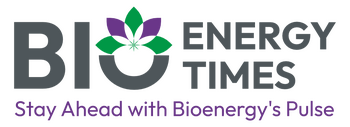Hydrogen holds promise as a fuel pivotal in the global shift towards renewable energy. Yet, its current production is both highly carbon-intensive and costly.
Water electrolysis, the process of splitting water molecules using electricity, presents an ideal method for generating “green” hydrogen, but the catalysts involved have not been thoroughly understood.
A recent study by Northwestern researchers focused on iridium-based oxides, the most promising catalysts, leading to the development of a novel catalyst. This advancement preserves higher activity, increased stability, and more efficient use of iridium, potentially facilitating feasible production of green hydrogen. Published in Nature Catalysis, the paper provides experimental evidence for the first time on how the surface of iridium oxide evolves during water electrolysis.
“Our innovations will propel us closer to a sustainable energy future, where green hydrogen production through water electrolysis becomes viable and the widespread adoption of these emerging technologies becomes more technologically and economically feasible,” stated Linsey Seitz, lead author of the paper and an electrochemist at Northwestern’s McCormick School of Engineering.
Seitz, an assistant professor specializing in chemical and biological engineering, underscored the significance of iridium as a rare byproduct of platinum mining, currently the sole viable catalyst for green hydrogen production due to the demanding conditions of the reaction. Proton exchange membrane (PEM) water electrolysis holds promise as it can operate entirely on renewable electricity, despite its requirement for an acidic environment limiting catalyst options.
The study also revealed that the surface structures of catalyst materials undergo significant changes under reaction conditions, a phenomenon previously challenging to identify due to rapid alterations during water electrolysis and potential damage from imaging techniques.
The team employed advanced microscopy and scattering techniques to examine catalyst surface structures before and after the electrolysis process. Their findings uncovered distinct paracrystalline structures within the previously described “amorphous” connections, crucial for catalyst stability and activity.
Armed with this new understanding, the team designed a catalyst solely using paracrystalline structures, demonstrating three to four times greater efficiency compared to other iridium-based catalysts in initial activity measurements.
Seitz anticipates applying these analytical techniques to study other complex catalyst materials, aiming to uncover their active structures and ultimately drive the development of high-performance catalysts optimized for precious metals and critical minerals.
“These foundational insights will guide the design of catalysts that maximize the utilization of precious metals and critical minerals,” Seitz concluded.














